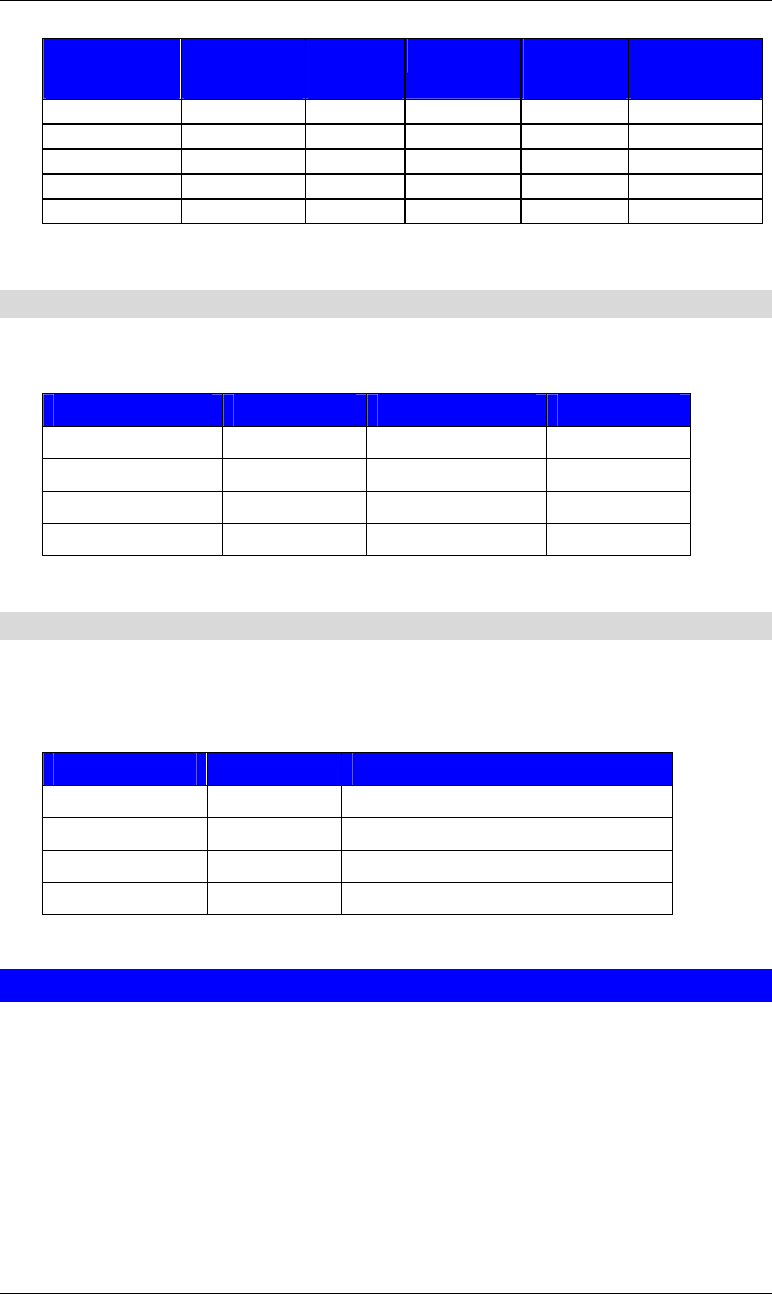
TVP-221H User’s Guide
18
• Address table sample:
Address
Entry
Hunt
Grp_Id
Min.
Digits
Max. Digits Prefix
strip
Prefix
Address
201 3 3 3 3 None
301 4 3 3 3 None
8 1 3 3 0 None
0 1 1 1 0 None
20 11 5 5 2 None
3.52 Hunt Group Table
The hunt group table maps a hunt group to a list of destinations. Hunt group
sample
Hunt Group ID Hunt Type # of Dest ID(s) Dest. ID(s)
1 2 1 1
3 2 1 3
4 2 1 4
11 2 1 11
3.53 Destination Table
The destination table maps a destination to a telephony port or the IP address of a
remote TVP-221H.
Destination table sample
Dest ID Mode Destination
1 Local Port = 0
3 Local Port = 2
4 Local Port = 3
11 H.323 Dest = 192.168.0.55/1720 TCP
3.6 DTMF Relay
Voice from PSTN is compressed by the TVP-221H before it is sent across the IP
network and then decompressed by the destination VoIP gateway. The voice
codecs supported by the TVP-221H are designed for ideally compressing and
decompressing human voice. If the compression / decompression process is
performed on DTMF tone which needs to be conveyed across IP network,
distortion might be too significant to be cognizable on the receiving end. To
overcome the shortcoming that the voice codecs may have encoding DTMF tone,
the TVP-221H encodes DTMF tone into special packets. The packets are then sent
to the destination VoIP Gateway via a separate IP connection. The destination
VoIP Gateway decodes the packets, generates the DTMF tone, and then sends the


















